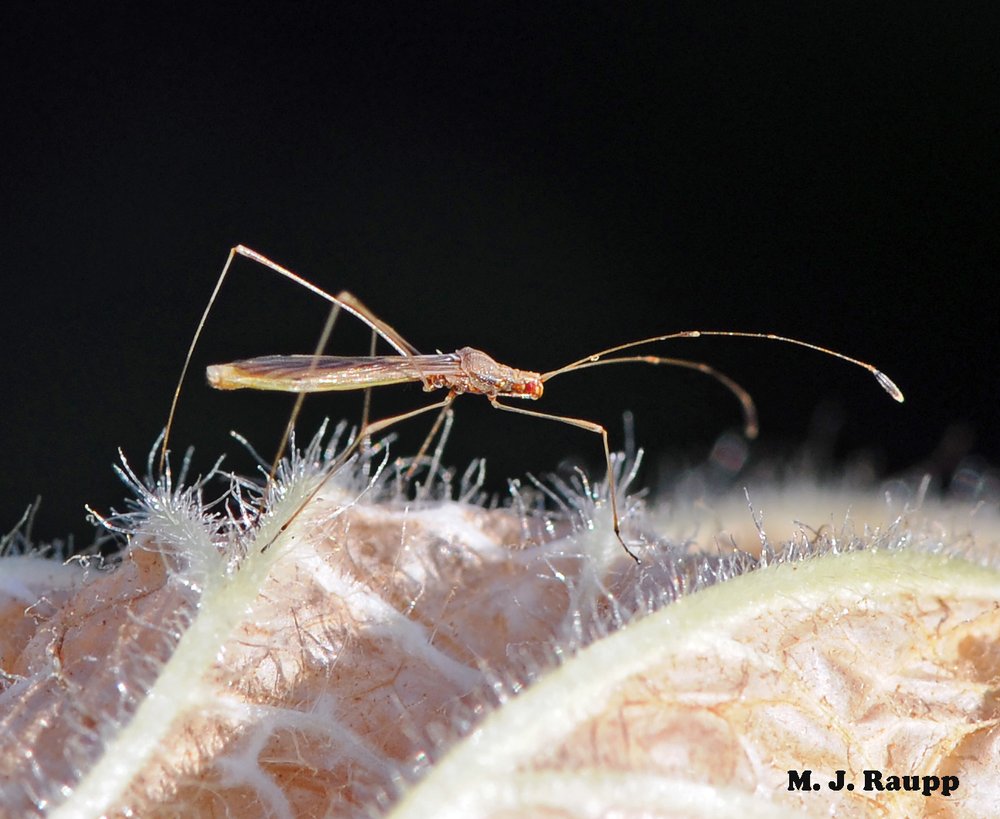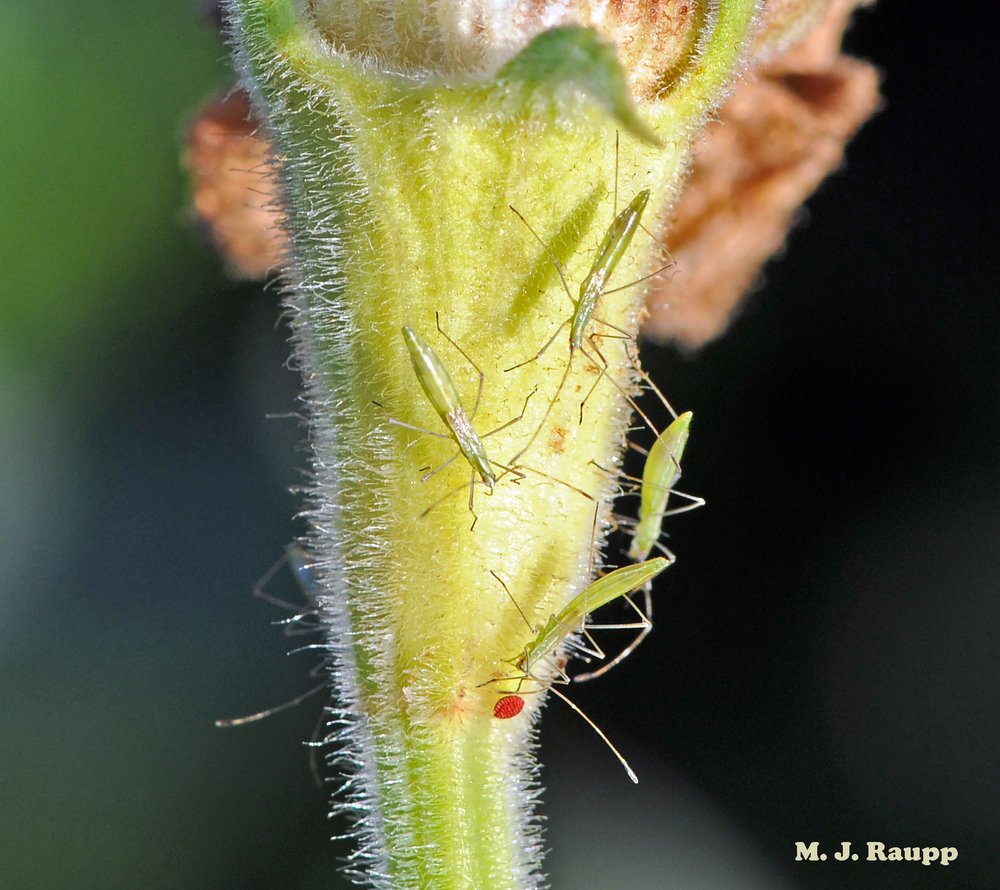Small, strange bugs with very long legs: Stilt bugs, Berytidae

A stilt bug ponders its next move at the edge of a zinnia leaf. Credit: Paula Shrewsbury, UMD

Amazingly long legs transport the stilt bug across a hairy leaf surface. Note its super long antennae.
Last week we witnessed the life and death struggle of thrips as they dodged fierce minute pirate bugs in cone flowers. Just down the flower bed from the cone flowers, a patch of zinnias sported a wide array of six-legged visitors, Japanese beetles, planthoppers, and a gangly member of the true bug clan, a heteropteran known as a stilt bug. In a previous episode we met fast moving stilt-legged flies snacking on tidbits of cheese and pretending they were ants on leaves in a rainforest. This week’s long-legged wonders seem to be mostly stuck in slow motion as they amble across vegetation in search of a meal or a mate. One common species here in the DMV, Jalysus wickhami, dines on more than four dozen species of plants in some seventeen plant families, most of which have been described as “glandular-hairy.” Due to their behavior of jabbing their pointy beaks into stems, flowers, and fruits to suck out nutritious cell contents, they can be severe pests of tomatoes grown outdoors and in hot-houses. When fed upon by stilt bugs, tomato flowers and stems can turn black and die. Feeding punctures can distort and discolor tomatoes making them unsalable.
This mating pair of stilt bugs certainly is not camera shy. The bug on the right is the female; the male is on the left. Watch as the female multitasks, grooming her legs while engaged with her mate. She collects a drop of fluid from her beak with her middle and hind legs and appears to apply it the surface of her hind leg. How curious is that?
A second species of stilt bug common in our region, Jalysus spinosus, is more of a specialist, feeding and breeding primarily on grasses in the genus Panicum. Ah, but like many of us, while the vegan diet may be a healthy one, every now and then a little meat doesn’t hurt, and stilt bugs can be important predators of insect pests, consuming eggs of hornworms, aphids and other small soft-bodied pests in a variety of crops. Nymphs and adults of J. wickhami have been raised and released in tobacco fields to augment activities of predatory insects already present in the crop. In addition to the two Jalysus species mentioned above, the Maryland Diversity Project lists Berytinus minor and Neoneides muticus as residents of our region. So, next time you visit your gardens and flower beds, keep a sharp eye out for these interesting tiny omnivores with unusually long legs.
Acknowledgements
Bug of the Week thanks Dr. Shrewsbury for her image of a stilt bug. Details of the life history and ecology of stilt bugs were extracted from these interesting references: “Jalysus spinosus and J. wickhami: Taxonomic Clarification, Review of Host Plants and Distribution, and Keys to Adults and 5th Instars” by A. G. Wheeler and Thomas Henry, “Spined Stilt Bug” by Michael Skvarla, and “Spined Stilt Bug in Tobacco” by Peter Nelson and Hannah Burrack.

This bevy of stilt bug nymphs are “beaks in” on this tender flower stem.
This post appeared first on Bug of the Week